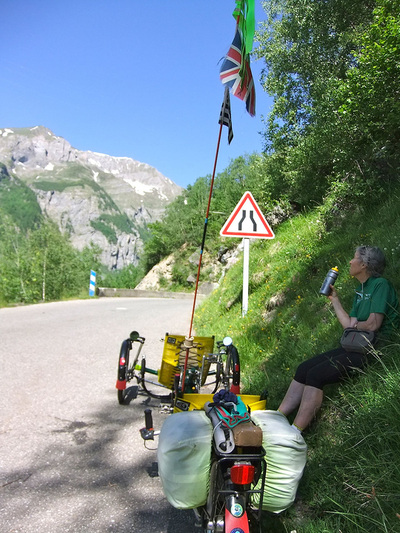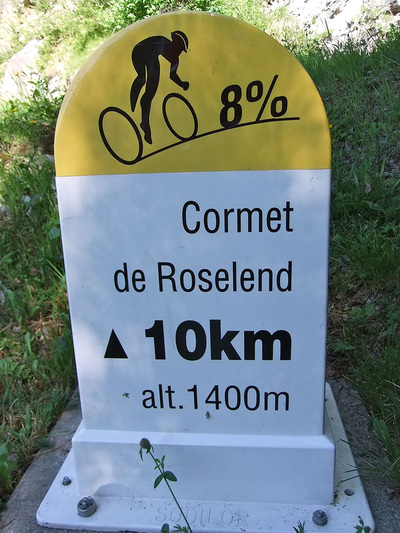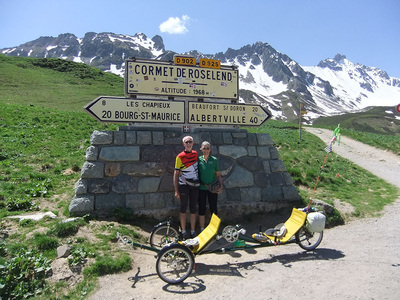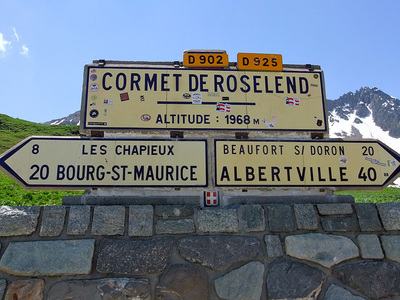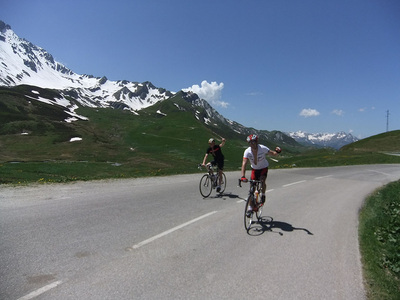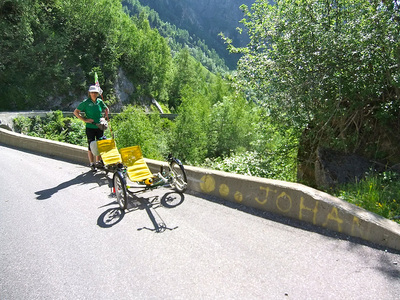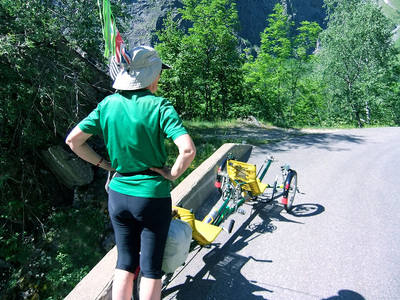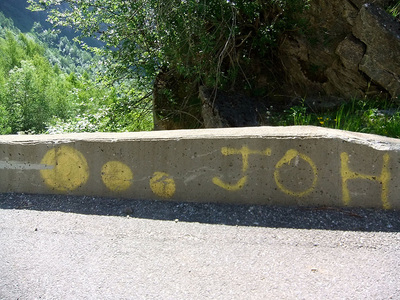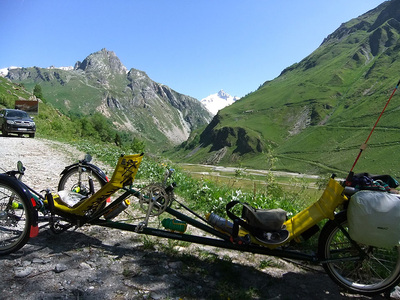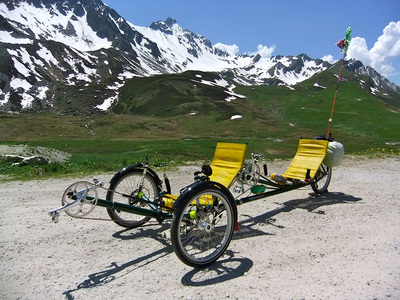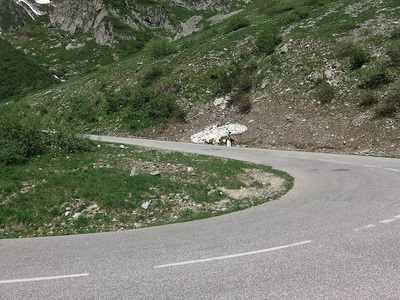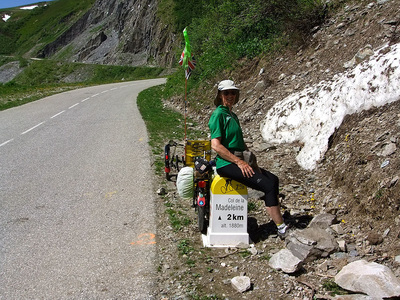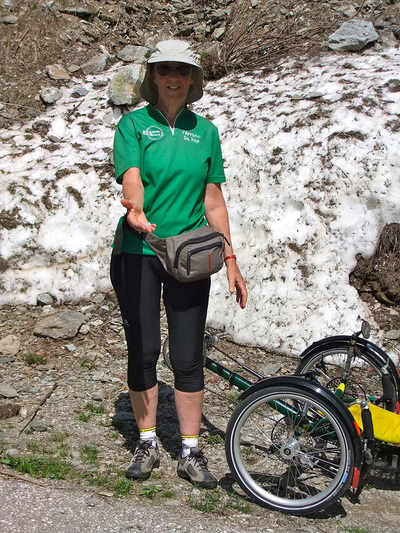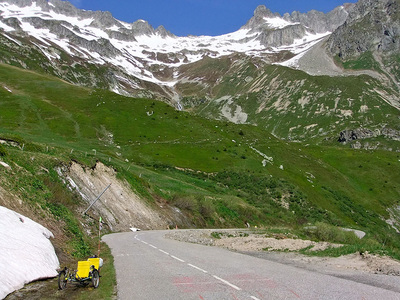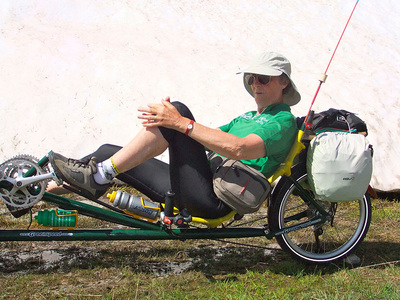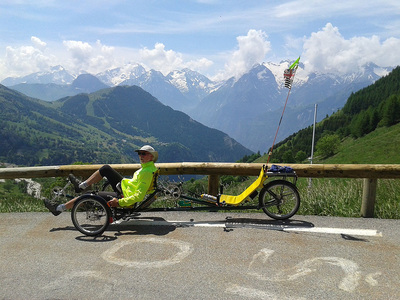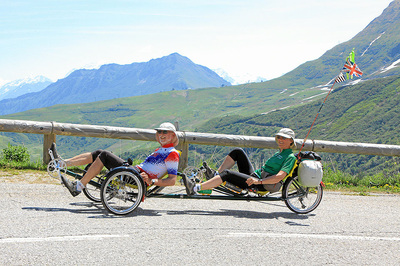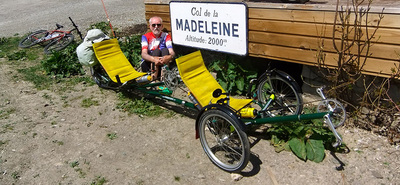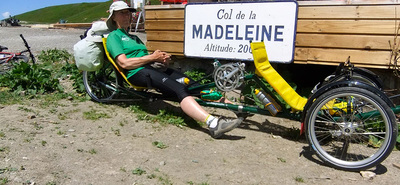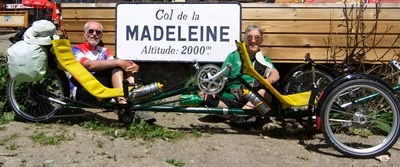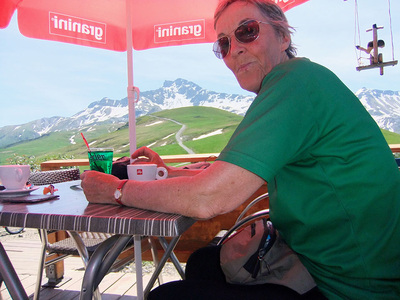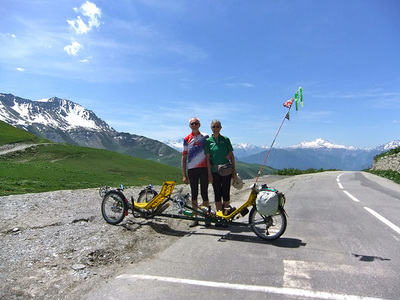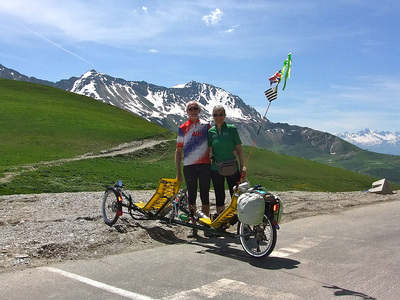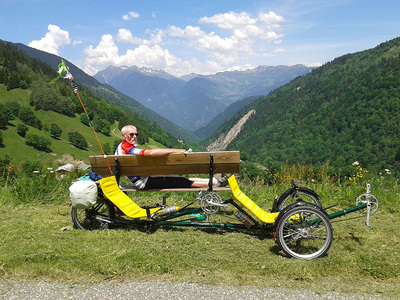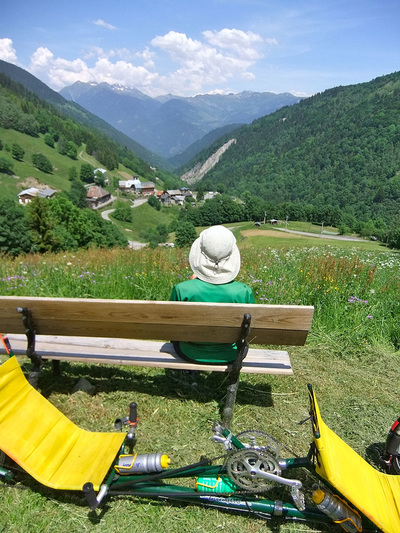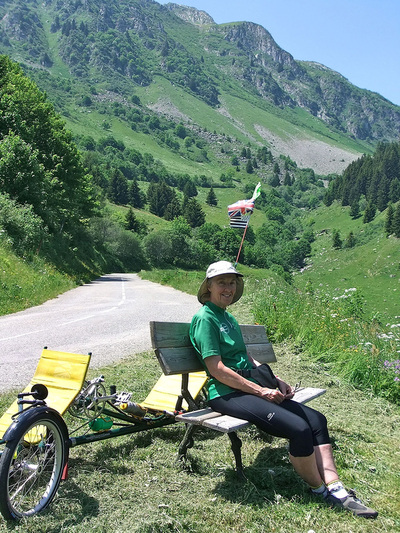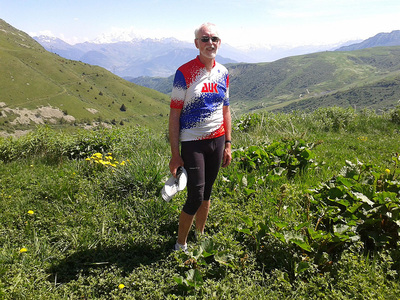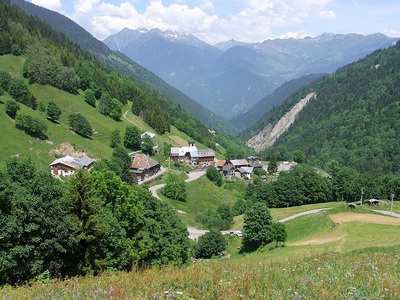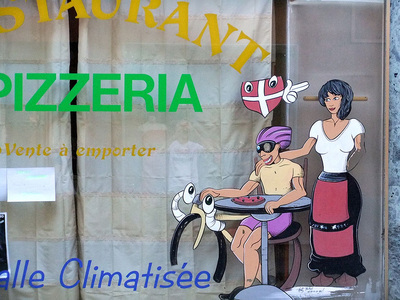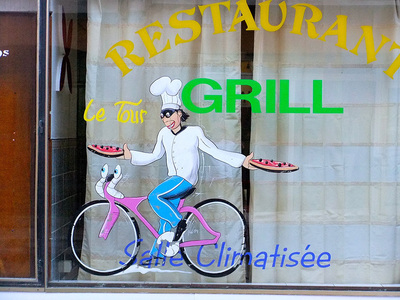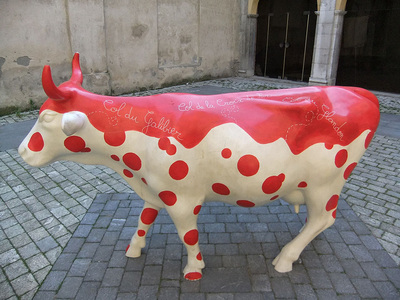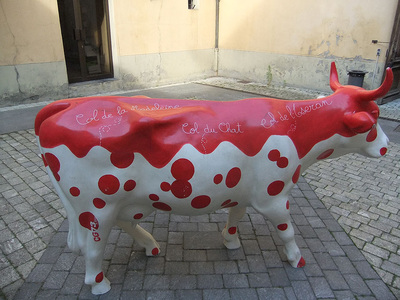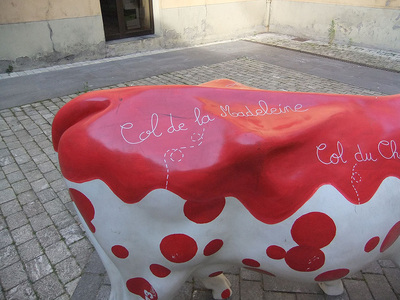Day 7: Surviving a Notorious Corner - Cormet de Roselend TdF Cat1 1,967m
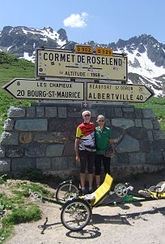
Today's route was intended to include the Col Les Saisies, Cormet de Roselend (Cat 1) and the option of La Plagne.
Famous as it is as a TdF high spspot, we had no intention of trying to add a climb of La Plagne onto the Cormet de Roseland, but we also discovered that the road to Les Saises was very busy and in a terrible condition and would have been a nightmare to bump along on the trike so we decided to give it a miss. And once again it was hot and sunny with valley temperatures in the rising 30s. So, taking all of this into account and notwithstanding that it was Wednesday we decided to settle for a regular “Lymington Tuesday Cycling” style of morning. That is, we started cycling at 10.00am, cycled for about two and a half hours, covered a bit over 30km and then had a roadside picnic lunch instead of a coffee stop. The only (and significant) difference was that on the way we climbed the Cormet de Roselend, a TdF Cat 1 climb taking us up to 1,967m at the Col beside snow clad mountain sides. Very scenic in all senses of the word. On the way down we had some rather technical sweeping bends and tight hairpins including Johan Bruyneel corner, which we are pleased to say we successfully negotiated (if you don’t know what this is just Google Johan Bruyneel) By evening the thunder storm we had been expecting for several days began to rumble around. Click on any photo to enlarge and scroll through
Day 8: First TdF HC climb and just breaking 2,000m - Col de la Madeleine
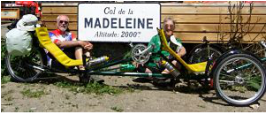
One of the Tour de France giants and often included. Usually in some crippling stage with La Madeleine and one or two other massive HC climbs also thrown in. But for the likes of us a hotel bed between this and the next big climb seemed like a very good idea.
Blue sky and hot sunshine again. Today’s picnic lunch was planned to be at the Col, so we had everything ready and grabbed an early breakfast so as to set off well before the others with a couple of hours start. Otherwise there was a risk that we would arrive after lunch was over. In the event as well as having extra time lunch was a leisurely affair with lots of lying around on the grass. The climb gradient varied through its length which was good because it gave some relief from a constant push. In fact for a bit there was a flat and slight downhill and in another part a km of 3% felt like flat in comparison with what had gone before. Needless to say there were some other kms that were full on where it took an eternity for the next km marker to arrive; and if I had been wearing a heart rate monitor it would have been well in the red zone (or whatever such monitors do) We had previously bumped into the “Fireflies” team on other cols on other days. This is an organised English charity ride across the Alps for tough cyclists. Needless to say they were intrigued by our machine. Luckily for us we met up with them on this climb just before their support van parked on the roadside, which was a life saver, because we were right out of water and they very kindly filled our bottles as well as those of their own team. We stopped at the 2km to go marker to photograph the trike against the snow and Sheila scooped some up to cool down but resisted putting it down the neck of her jersey fearing the shock might be too great. The final km gradient eased off to 5%, which was very kind and you know you are on one the “must do” mountain climbs when there is an official photographer on the last bend before the summit. We took our own photos at the Col and had a picnic lunch at the top. The official Col sign had been removed, but the café at the top had enterprisingly had their own made and fixed to the cafe balcony. The Fireflies also lined up for a group photo. The descent was fast and exhilarating. Looking down the steepness of some of the drops in the road while hanging on to the brakes we found it hard to believe we had actually cycled up quite so unrelentingly steep a climb. On the way down we paused a couple of times to admire the view and allow the brakes to cool down. Although hard braking and letting it run alternately avoids burning the rotors (with the disastrous effect of almost total braking loss). The hydraulic brake fluid heats up and expands requiring adjustment of the reservoirs by turning the knurled caps beside the brake levers as you go down. Remembering at the same time to pay attention to the road and the next fast appearing hairpin bend or similar hazard. At one point the local authority had thoughtfully provided a bench perched on the side of the road looking straight down the valley. We reclined here and had a short relax. Our hotel for the night was in St Jean Maurienne and we had time for a bit of sightseeing including bicycle shop windows and a TdF Cols cow (see photos below). By 9pm with a breeze blowing the temperature at last reached a comfortable level for sitting outdoors for dinner. It was hard to believe the snow was still up there on the mountainside. Click on any photo to enlarge and scroll through
|


